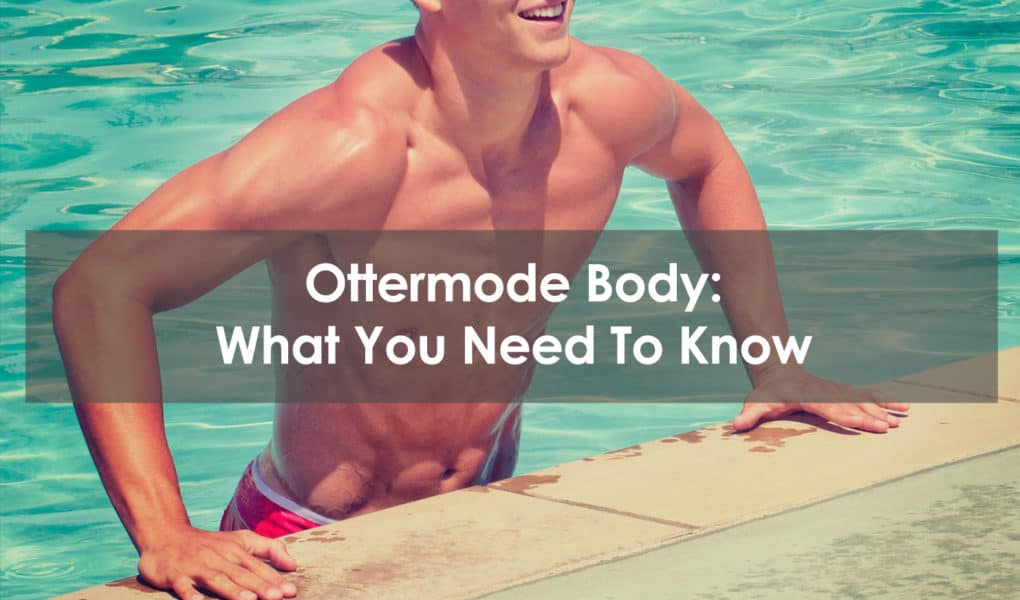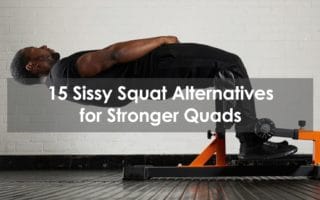If you asked a group of men what type of body they would most like to achieve, there’s a good chance many of them would say ottermode, or the swimmer’s physique.
With low levels of body fat, toned muscles, and six-pack abs, it’s an aesthetically pleasing body type that is also highly functional. It’s a v-shape form you’ll see on almost all male Olympic swimmers, with broad shoulders and lots of muscle definition.
Here, we’ll dive (excuse the pun) into what constitutes an ottermode body and how you can achieve it yourself.
What is Ottermode?
One of the key staples of the ottermode body type is low body fat. Not only does this lead to a more muscular body, but it also helps make these muscles more pronounced. Ottermode also consists of broad shoulders, well-defined abdominal muscles, and a relatively thin waist, which is what creates the v-shape.
While there is significant muscle tone, the ottermode body is not packed with masses of muscle. That being said, there are still prominent levels of muscle across the entire body, particularly around the shoulders.
It is a very athletic body type that can aid in the performance of a variety of exercises, sports, and tasks. With less body fat, ottermode also promotes overall health and lowers the risk of certain health issues such as heart disease and osteoporosis.
The easiest way to get an idea of what ottermode looks like is to imagine a competitive swimmer or take a look at the examples below.
Ottermode examples
Ottermode body composition
Your BMI (body mass index) is a measurement taken by comparing your height to your weight. With ottermode, your BMI is probably going to fall into the ‘normal’ range – for example, Michael Phelps has a BMI of roughly 24.1.
However, the BMI index is fairly rudimentary and doesn’t account for levels of body fat or muscle mass; anything above 24.9 on the BMI index is considered overweight.
So, it’s best to look beyond this when defining ottermode. Body fat percentage is a useful metric to measure, and generally, those with an ottermode physique will have anywhere between 5 and 11 percent body fat.
On top of that, there will be some muscle mass, particularly in the upper body. Though this is more difficult to scientifically measure, this body type will have well-toned muscles, particularly around the arms, shoulders, and abs.
How to achieve ottermode
Resistance training
In order to develop the solid muscle that you see on those with an ottermode physique, you’ll need to lift weights regularly. Now, this doesn’t mean starting lifting heavy weights and moving into bodybuilding, but you should instead focus on high rep counts in your sets with slightly lighter weights.
Weight training should become a weekly occurrence for you and each major muscle group should be worked at least twice a week to see more definition and growth.
Exercises like the bench press, pull-ups, curls, and rows will all serve to define the muscles in your upper body and contribute to the ottermode physique.
Cardio training
Likewise, you should also include plenty of cardiovascular training in your exercise regimen, as this will help you burn more calories and keep body fat levels low. Ideally, you want to perform interval training, such as HIIT (high-intensity interval training), where you are exercising intensely for a short burst, then tapering off for a rest period and repeating this cycle on and off.
These intervals can be any form of cardio training, for example sprints, bodyweight movements, or swimming – as long as your heart rate is elevated and you’re working as hard as possible in those short bursts, you’ll be burning calories quickly.
Diet
This is the most important factor in achieving an ottermode body. Your diet should be balanced and almost exclusively consists of clean food i.e. nutritious, muscle-building foods like lean proteins, complex carbohydrates and fruit & vegetables.
The number of calories you consume will depend on your current body type, but if you’re trying to lose body fat then you should be in a calorie deficit, which is when you consume fewer calories per day than the amount you burn.
Final Thoughts
While the term ‘ottermode’ might be new to you, it’s likely you’re aware of the body type it refers to; broad shoulders, toned muscles, and six-pack abs. It’s a physique that many aspire to for a variety of reasons, whether they’re aesthetic or performance-based.
With the right training and diet, it’s possible to achieve an ottermode body but it will take time, dedication, and patience.
Frequently Asked Questions
What is an athletic physique?
The term ‘athletic physique’ is often used in conjunction with ottermode as they’re very similar. An athletic body type has low levels of body fat and, thus, high definition in the muscles. This physique is not too bulky, so the muscles aren’t massive, but they are toned and functional.
What is a swimmer’s body?
Ottermode pretty much refers to a swimmer’s body, which features broad shoulders, toned muscles, and low levels of body fat. It’s worth remembering that the competitive swimmers you see on television are professional athletes, many of whom are able to commit to their training and lifestyle as a full-time job.
Their physique is also designed for one purpose – swimming – and almost all aspects of their life will be geared toward enhancing performance. So, a swimmer’s body isn’t necessarily a realistic goal for many people.







